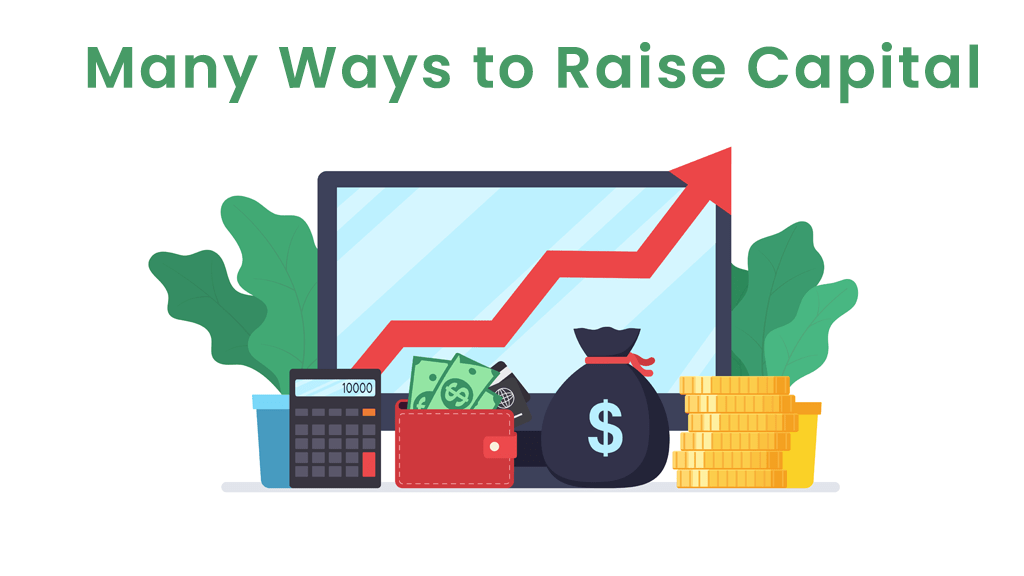Best Way To Raise Capital Small Business

For value-conscious small business owners, securing the right capital is paramount to survival and growth. This review aims to provide a comprehensive analysis of the best funding options, weighing their pros, cons, and suitability for different business needs and financial situations.
Why Smart Capital Decisions Matter for Small Businesses
Access to capital can be the difference between thriving and failing, especially in the competitive small business landscape. Prudent capital acquisition allows for strategic investments, managing operational costs, and seizing growth opportunities.
Choosing the wrong funding source can lead to crippling debt, loss of equity, or missed potential. Therefore, a thorough understanding of available options is essential.
Shortlist of Capital Raising Options
Here's a quick overview of funding sources catering to different needs and budgets:
- Bootstrapping: Ideal for startups with limited initial capital.
- Small Business Loans (SBA Loans): Government-backed loans offering favorable terms.
- Lines of Credit: Flexible funding for managing short-term cash flow.
- Venture Capital: High-risk, high-reward funding for scalable businesses.
- Angel Investors: Individual investors providing capital in exchange for equity.
- Crowdfunding: Raising small amounts of money from a large number of people.
- Microloans: Small loans designed for underserved entrepreneurs.
Detailed Reviews of Top Capital Raising Methods
Bootstrapping: The Self-Funded Approach
Bootstrapping involves using personal savings, revenue, and creative resourcefulness to fund a business. It's the most common starting point for many small businesses.
The primary advantage is maintaining full control and ownership. However, growth can be slower and more constrained.
Small Business Administration (SBA) Loans: Government-Backed Support
SBA loans are partially guaranteed by the U.S. Small Business Administration, reducing risk for lenders. This translates to more favorable terms for borrowers, such as lower interest rates and longer repayment periods.
SBA loans often require extensive paperwork and can have a lengthy approval process. Creditworthiness is also a crucial factor.
Lines of Credit: Flexible Funding for Cash Flow
A business line of credit provides access to a revolving pool of funds that can be used as needed. This is useful for managing seasonal fluctuations in cash flow or covering unexpected expenses.
Interest is only charged on the amount borrowed, offering flexibility. However, lines of credit often have variable interest rates.
Venture Capital: Fueling Rapid Growth
Venture capital firms invest in high-growth potential startups in exchange for equity. This can provide significant capital infusions to scale rapidly.
However, venture capital comes with a loss of control and significant pressure to deliver high returns. It's not suitable for all businesses.
Angel Investors: Early-Stage Funding
Angel investors are individuals who invest their own money in early-stage companies. They often provide mentorship and guidance in addition to capital.
Finding the right angel investor who aligns with your business vision is crucial. Angel investors also take equity in exchange for their investment.
Crowdfunding: Engaging the Crowd
Crowdfunding involves raising small amounts of money from a large number of people, typically through online platforms. It can be a good option for businesses with a strong community or innovative product.
Successful crowdfunding requires effective marketing and engagement. Failure to meet funding goals can be detrimental to reputation.
Microloans: Small Loans, Big Impact
Microloans are small loans designed for entrepreneurs who may not qualify for traditional bank loans. These are often offered by non-profit organizations or community lenders.
Microloans can be a lifeline for underserved entrepreneurs. However, they often come with higher interest rates than SBA loans.
Side-by-Side Comparison
| Funding Source | Pros | Cons | Suitable For | Performance Score (out of 5) |
|---|---|---|---|---|
| Bootstrapping | Full control, no debt | Slow growth, limited capital | Early-stage startups | 3 |
| SBA Loans | Favorable terms, government-backed | Extensive paperwork, lengthy approval | Established businesses with good credit | 4 |
| Lines of Credit | Flexible, revolving funds | Variable interest rates | Managing cash flow, short-term needs | 4 |
| Venture Capital | Large capital infusions, rapid growth | Loss of control, high pressure | High-growth potential startups | 3 |
| Angel Investors | Mentorship, early-stage funding | Loss of equity, finding the right investor | Early-stage startups | 3 |
| Crowdfunding | Community engagement, brand awareness | Marketing effort, funding goals | Innovative products, strong community | 3 |
| Microloans | Access for underserved entrepreneurs | Higher interest rates | Small businesses with limited credit | 3 |
Practical Considerations for Choosing Funding
Before committing to any funding source, carefully assess your business needs, financial situation, and risk tolerance. Consider factors such as interest rates, repayment terms, equity dilution, and personal guarantees.
It's crucial to develop a solid business plan and financial projections to demonstrate your ability to repay the loan or generate returns for investors. Seek advice from financial professionals to make informed decisions.
Key Takeaways
Choosing the best way to raise capital requires a thorough understanding of available options and their implications. Each funding source has its own advantages and disadvantages, and the ideal choice depends on your specific business needs and circumstances.
Carefully evaluate your business plan, financial situation, and risk tolerance before making a decision. Remember, the right capital can fuel growth, while the wrong choice can lead to financial distress.
Take Action Today!
Now that you're equipped with the knowledge of various funding options, take the next step! Research each option further, consult with financial advisors, and develop a solid plan to secure the capital you need to grow your business. Don't wait, your business's future depends on it!
Frequently Asked Questions (FAQ)
What is the best way to raise capital for a small business with no credit?
Bootstrapping, microloans, and crowdfunding can be good options for businesses with limited credit history. Consider focusing on building a strong business plan and seeking mentorship.
How much equity should I give up for venture capital funding?
The amount of equity depends on the stage of your business, the amount of funding, and the valuation. Consult with experienced advisors to negotiate fair terms.
What are the key factors lenders consider when evaluating a loan application?
Lenders typically consider your credit score, business plan, financial projections, and collateral.
Is it better to bootstrap or seek outside funding?
Bootstrapping allows you to maintain full control, but growth may be slower. Outside funding can accelerate growth but comes with a loss of control and potential debt.
What are the tax implications of raising capital through different methods?
The tax implications vary depending on the funding source. Consult with a tax advisor to understand the specific rules and regulations.


















